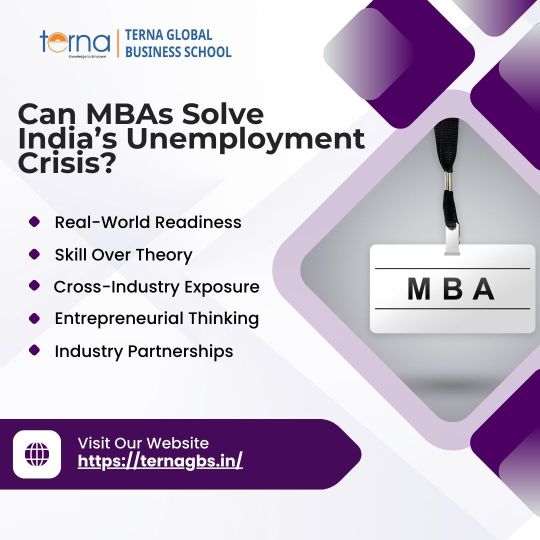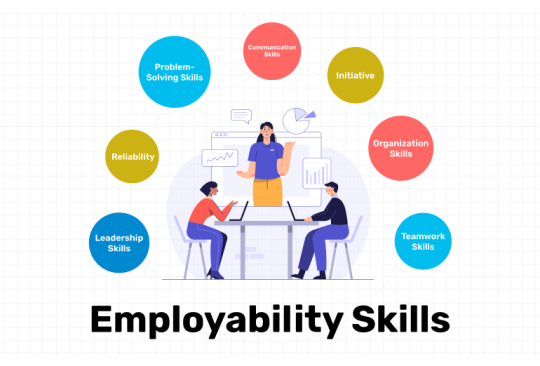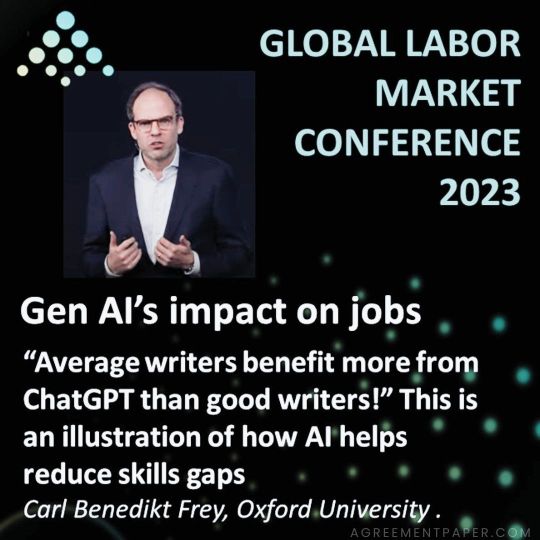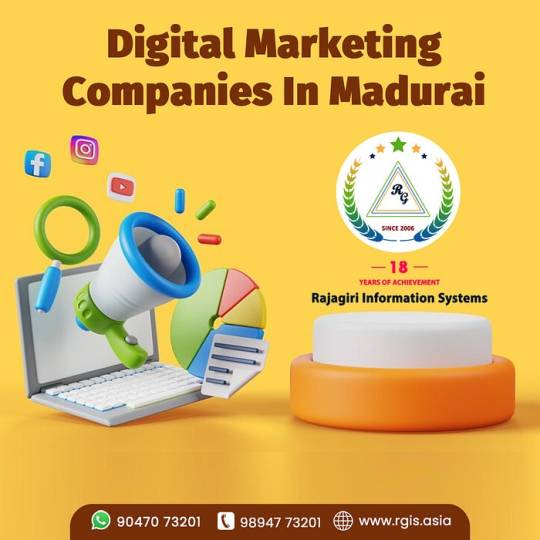#SkillGap
Explore tagged Tumblr posts
Text

Can MBAs Solve India’s Unemployment Crisis?
India’s unemployment problem isn’t just about a lack of jobs—it’s about a lack of job-ready talent. While millions graduate every year, employers continue to struggle with a growing skill gap. This is where a well-structured MBA can make a real difference.
How MBAs Can Bridge the Skill Gap:
Real-World Readiness MBA programs train students through case studies, internships, and simulations—making them ready for actual business challenges from day one.
Skill Over Theory Top B-schools now focus on critical thinking, data literacy, digital tools, leadership, and emotional intelligence—skills most employers demand.
Cross-Industry Exposure From finance and marketing to HR and healthcare, MBA students learn to adapt and thrive across industries.
Entrepreneurial Thinking With modules on innovation and startup management, MBAs can become job creators, not just job seekers.
Industry Partnerships Institutes like Terna Global Business School (TGBS) connect students with live projects, guest lectures, and industry mentorship—bridging the gap between classrooms and boardrooms.
#FutureMBAs#MBACareers#SkillGap#FutureOfWork#RealWorldLearning#TernaGBS#TopMBACollege#MBANaviMumbai#MBA2025#TopMBACollegesInNaviMumbai#TopMBAInNaviMumbai
0 notes
Text

Why is labour data suddenly a boardroom topic?
Because today’s workforce strategy goes beyond instinct.
✔️ Spot burnout before it impacts performance ✔️ Predict attrition and plan ahead ✔️ Identify and close skill gaps ✔️ Create workplaces rooted in empathy
Whether you're in HR or the C-suite, people analytics is your new superpower. 📖 Dive into how it's changing the game: https://shorturl.at/iidq6
#PeopleAnalytics#WorkforceStrategy#HRTech#EmployeeWellbeing#FutureOfWork#JobsPikr#WorkplaceCulture#SkillGap#LeadershipTools#TumblrReads
0 notes
Text
#IndiaTech#BFSI#WorkforceChallenges#TalentAcquisition#SkillGap#DigitalTransformation#HRStrategies#IndianEconomy
0 notes
Text
The Golden Age of Halo is Gone
There was a time when gaming meant something different. Back in 2007, competitive gaming wasn’t just about casually logging on and hoping for a decent match—it was an art, a battleground, a test of skill and strategy. I was part of that era, playing in an MLG Halo 3 clan, where every match was a war of wits and reflexes. The maps were our arenas—Valhalla, Foundry, Sandbox, Sandtrap—each with its own rhythm, its own challenges.
Halo 3 wasn’t just a game; it was an experience. Teamwork was everything. We practiced, we refined our skills, and we fought to win. There was a sense of community, a level of respect for the craft of playing well. It was an era where skill mattered, and only the best could dominate.
But fast forward to today. I recently fired up Halo: The Master Chief Collection for the first time in years, expecting at least a fraction of that old magic. What I found instead was disappointment. The lobbies are filled with players who seem to lack the fundamentals—the map awareness, the tactical precision, even the ability to control engagements. It’s all so... casual now.
What happened? Is it a sign of gaming culture shifting? Have ranked matches lost their meaning? Or have players simply become too used to modern, hand-holding game mechanics that don’t demand the same level of skill?
The clan days may be gone, but the real tragedy is the decline of true competitive play. Those of us who lived through the golden age of Halo remember what it was like—every match an adrenaline rush, every kill hard-earned. It’s a shame to see that standard lost.
Maybe I’m just nostalgic. Or maybe gaming really has lost something. Either way, I miss the days when Halo was more than just a game—it was a battlefield where only the best survived.
What do you think? Have online shooters lost their competitive edge, or is it just the way things are now? Let me know in the comments.
#Halo3#MLG#GamingNostalgia#HaloMCC#ClassicGaming#CompetitiveGaming#HaloClan#FPSGames#XboxGaming#OldSchoolHalo#HaloLegends#GamerLife#GamingCommunity#EsportsHistory#HaloMultiplayer#ThrowbackGaming#GamingSkills#HaloMaps#XboxLive#SkillGap#today on tumblr#new blog
0 notes
Text
Understanding Unemployability and Unemployable: Breaking Down the Barriers

In today’s fast-evolving job market, discussions around unemployability and unemployable individuals are becoming increasingly prominent. These terms, though interconnected, highlight the challenges faced by individuals who struggle to secure jobs and the systemic issues that contribute to their predicament. In this blog, we’ll explore what these terms mean, their causes, and actionable steps to address the issues they represent.
What Does Unemployability and Unemployable Mean?
The term unemployability refers to a state where an individual is unable to secure gainful employment despite an active job search. This could be due to personal, educational, or systemic barriers. On the other hand, being labeled as unemployable suggests that an individual lacks the skills, qualifications, or characteristics deemed necessary by employers in a competitive job market.
These terms carry significant implications, both for individuals and society. Addressing unemployability and unemployable status requires understanding its root causes and taking targeted actions.
Causes of Unemployability and Unemployable Status
Skill Gaps One of the most common reasons for unemployability and unemployable status is a mismatch between the skills job seekers possess and the skills employers need. In rapidly evolving industries, outdated knowledge or lack of technical expertise can render even experienced individuals unemployable.
Education Inequality Educational disparities often leave individuals without access to quality training or certifications. This makes it difficult to compete with better-qualified candidates in the job market.
Economic Shifts Structural unemployment caused by economic shifts, such as automation or outsourcing, can lead to increased unemployability. Entire industries sometimes decline, leaving workers stranded without transferable skills.
Personal Barriers Health issues, lack of transportation, or caregiving responsibilities can contribute to unemployability, even among individuals who are otherwise capable.
Social Biases Discrimination based on age, gender, ethnicity, or disability often unfairly labels individuals as unemployable, regardless of their qualifications or abilities.
The Social Impact of Unemployability and Unemployable Labels
When large segments of the population face unemployability, the consequences are far-reaching. For individuals, it can lead to financial insecurity, loss of self-esteem, and mental health struggles. On a societal level, it can result in higher dependency on social welfare systems, reduced economic productivity, and increased inequality.
The label unemployable is particularly damaging. It stigmatizes individuals, making it even harder for them to find opportunities. Employers may overlook capable candidates simply because of preconceived notions about their potential.
Tackling Unemployability and Unemployable Challenges
Addressing unemployability and unemployable issues requires collaborative efforts from governments, educational institutions, employers, and individuals. Here are some strategies:
Invest in Skills Development Governments and organizations must prioritize accessible training programs that teach in-demand skills. Partnerships between industries and educational institutions can help bridge the gap.
Promote Lifelong Learning Encouraging individuals to continuously update their knowledge and skills ensures they remain competitive in the job market. Platforms like online courses and certifications can make this process easier.
Improve Job Matching Services Advanced job-matching algorithms and career counseling can help individuals align their strengths with available opportunities, reducing unemployability.
Combat Biases in Hiring Employers should focus on diversity and inclusion, creating fair hiring practices that value skills and potential over traditional qualifications.
Supportive Policies Policymakers must address barriers like affordable childcare, healthcare, and transportation that contribute to unemployability.
Encourage Entrepreneurial Initiatives Promoting entrepreneurship can empower individuals to create their opportunities, bypassing traditional employment hurdles.
A Positive Outlook
While the challenges of unemployability and unemployable status may seem daunting, progress is achievable. Many organizations and governments are already implementing initiatives to upskill individuals and reduce barriers. Success stories abound of people who have transitioned from being labeled "unemployable" to thriving in fulfilling careers.
Ultimately, addressing unemployability and unemployable issues is not just about individual success—it’s about building a more inclusive and resilient economy. With collective effort, we can ensure everyone has the opportunity to contribute meaningfully to society.
Final Thoughts
The conversation around unemployability and unemployable isn’t just a theoretical exercise. It’s a pressing issue that demands action from all corners of society. Whether it’s through education, policy reform, or personal initiative, breaking down these barriers will lead to a more equitable and prosperous future.
1 note
·
View note
Text
Is Dr. Niranjan Hiranandani Addressing the Skill Gap in MSMEs and Housing?
The Micro, Small & Medium Enterprises (MSME) sector and the housing industry are vital components of economic growth, yet both face a significant challenge: a critical skill gap. In this post, we delve into how this gap is hindering progress and how thought leaders like Dr. Niranjan Hiranandani are stepping up to tackle these pressing issues.
youtube
Understanding the Skill Gap
The MSME sector, which is often referred to as the backbone of the Indian economy, contributes significantly to employment and innovation. However, a lack of skilled labor is stunting its growth. Many MSMEs struggle to find employees who possess the necessary skills and expertise, leading to inefficiencies and missed opportunities for innovation.
The housing industry, too, is feeling the pinch. Skilled labor shortages are delaying construction projects, affecting housing affordability, and ultimately impacting the quality of living for many. As urbanization accelerates, the demand for affordable housing is rising, but the inability to find skilled workers to meet this demand poses a significant hurdle.
The Challenges Faced by MSMEs
MSMEs encounter numerous challenges in their quest for skilled talent. Many small businesses operate on tight budgets, making it difficult to invest in training and development programs. Furthermore, the rapid pace of technological change means that even existing workers may need retraining to keep up with industry advancements.
Additionally, the perception of MSMEs as less stable or desirable employment options compared to larger corporations further exacerbates the problem. Young professionals often gravitate towards more established companies, leaving MSMEs struggling to attract the talent they need.
Impact on the Housing Sector
The housing sector is particularly vulnerable to the skill gap. With rising demand for affordable housing, the shortage of skilled labor is causing delays in construction timelines, which in turn affects supply and pricing. As a result, housing becomes less affordable, further alienating lower-income families from homeownership opportunities.
Quality is another concern; projects rushed due to labor shortages often compromise on construction standards, leading to long-term implications for safety and durability.
Potential Solutions: A Path Forward
Addressing the skill gap requires a multi-faceted approach. Collaboration between industry leaders, educational institutions, and government agencies is crucial.
Dr. Niranjan Hiranandani, a prominent figure in the real estate sector, has been vocal about the need for better skill development initiatives. His advocacy for integrating vocational training into educational curricula aims to ensure that future workers are equipped with the skills required by MSMEs and the housing sector.
Moreover, creating awareness about the benefits of working in MSMEs can help shift perceptions. Highlighting success stories and career growth opportunities within these businesses can attract talent to this sector.
Investing in technology and innovation is also essential. By adopting new tools and methodologies, MSMEs can streamline their operations, making them more attractive to potential employees. Additionally, partnerships with tech companies can provide training programs tailored to the industry's needs.
Conclusion
The skill gap in the MSME and housing sectors poses a significant barrier to growth and innovation. However, with visionary leaders like Dr. Niranjan Hiranandani championing skill development and industry collaboration, there is hope for bridging this gap. By investing in training and reshaping perceptions, we can empower these sectors for a more sustainable and prosperous future. Addressing this issue is not just about filling jobs; it's about securing the economic foundation for generations to come.
#MSMEs#SkillGap#HousingIndustry#DrNiranjanHiranandani#EconomicGrowth#SkilledLabor#AffordableHousing#VocationalTraining#SustainableDevelopment#Innovation#RealEstate#SmallBusiness#SkillDevelopment#ConstructionIndustry#FutureOfWork#Youtube
0 notes
Text

Agreementpaper - Global Labor Market Conference 2023
An amazing statement by Prof. Carl Benedikt Frey of Oxford University at the Global Labor Market Conference!
We can all benefit from Gen AI, and the lower your skills, the greater the impact. An illustration of how AI helps to reduce the skills gap.
What do you think about that?
0 notes
Text
Why Digital Marketing Without Data is Like Driving Blindfolded

Businesses are increasingly relying on digital marketing to boost visibility and grow their customer base. However, a significant mistake that many businesses make is engaging in digital marketing without utilizing data. A "Digital Marketing Company in Madurai" or anywhere else can attest that digital marketing strategies are only effective when driven by data.
Without data, digital marketing efforts are like driving a car blindfolded. You may have the right tools—social media platforms, Google Ads, SEO techniques—but without understanding how these tools are performing, you're essentially navigating without a clear direction. Data allows businesses to see what is working and what is not, helping marketers optimize campaigns and make smarter decisions.
For example, a digital marketing campaign without data-driven insights cannot track key performance indicators (KPIs), such as website traffic, conversion rates, customer behavior, and ROI. A "Digital Marketing Company in Madurai" would never launch a campaign without proper analysis, as data is the foundation for successful campaigns. With data, you can target the right audience, choose the right platforms, and measure success effectively.
Moreover, digital marketing strategies without data are based on assumptions, which can lead to wasted time, effort, and resources. Data ensures that decisions are backed by facts, not guesses. With the right metrics, digital marketing companies can make informed adjustments in real time, leading to better results.
In conclusion, data is the compass that guides digital marketing efforts. Without it, businesses are essentially driving blind. A well-informed "Digital Marketing Company in Madurai" will always prioritize data analysis to ensure that marketing campaigns are not only creative but also effective. So, before diving into your next marketing initiative, make sure you're equipped with the right data—it's the only way to steer your business toward success in the digital world.
Visit their website: www.rgis.asia or call +91 9894773201 to learn more about their services and start your journey towards online success.
Also Read : 10 Reasons Why Rajagiri Information Systems is Best SEO Company
#DigitalMarketingMadurai#StartupEcosystem#BusinessScalability#InHouseVsAgency#MarketingStrategy#DigitalTransformation#MarketingTools#SkillGaps#MarketingAgencyBenefits#DataDrivenMarketing#OutsourceMarketing#MaduraiStartups#OnlineGrowth#PPCExperts
0 notes
Video
tumblr
In today’s fast-changing job market, uncertainty is inevitable — industries evolve, roles change, and new skills emerge. The key to navigating it? Staying adaptable and knowing how to leverage your transferable skills across industries and roles. Tip : Use Uncertainty as a Skills Checkpoint When things shift, review what’s in demand and where your skills need updating. Change can reveal opportunities you haven’t considered. Tip : Highlight Your Transferable Skills Skills like problem-solving, leadership, and digital fluency are valuable everywhere. Show employers how your strengths can solve their challenges. Uncertainty isn’t a career roadblock — it’s a chance to find new paths and build new strengths. Stay prepared, stay confident. Visit: careerniche.ca
0 notes
Text
What Do Staff Augmentation Trends Mean for Recruitment and How to Benefit from Them?

In today's rapidly evolving business landscape, the concept of staff augmentation has gained significant traction. As companies navigate the challenges posed by technological advancements, economic fluctuations, and a dynamic talent pool, understanding staff augmentation trends becomes crucial for effective recruitment strategies. Staff augmentation offers a flexible and efficient solution for organizations looking to enhance their workforce without the long-term commitments of traditional hiring. By temporarily adding skilled professionals to their teams, businesses can address specific project needs, fill skill gaps, and maintain agility in an ever-changing market.
The increasing complexity of modern business operations, driven by innovations in technology and shifts in market demands, necessitates a workforce that can quickly adapt and respond. Traditional hiring methods, often lengthy and resource-intensive, may not always provide the swift response required. This is where staff augmentation steps in, offering a viable alternative that aligns with the fast-paced nature of contemporary business environments. As the trend continues to rise, it's imperative for recruitment teams to stay ahead of the curve, leveraging these trends to attract and retain top talent while optimizing their operational efficiency.
In this blog, we will delve into the latest staff augmentation trends, their implications for recruitment, and how organizations can leverage these trends to their advantage. Understanding these dynamics not only helps in addressing immediate workforce needs but also plays a pivotal role in shaping long-term business strategies. By exploring the nuances of staff augmentation and its growing relevance, we aim to provide insights that will help businesses build a more resilient and responsive workforce.
Understanding Staff Augmentation
Staff augmentation is a flexible outsourcing strategy where businesses hire external professionals on a temporary basis to augment their existing workforce. This approach allows companies to scale their teams quickly and efficiently, addressing skill gaps and meeting project-specific demands without the long-term commitments associated with traditional hiring.
Key Staff Augmentation Trends
1. Increased Demand for Specialized Skills
With the rise of emerging technologies like artificial intelligence, blockchain, and cybersecurity, there is a growing need for specialized skills that may not be readily available within an organization. Staff augmentation allows companies to access niche expertise on-demand, ensuring they stay competitive and innovative.
2. Remote Work and Global Talent Pools
The COVID-19 pandemic has accelerated the adoption of remote work, making it easier for companies to tap into a global talent pool. This trend is particularly beneficial for staff augmentation, as it allows organizations to source top talent from anywhere in the world, breaking down geographical barriers and reducing costs.
3. Agile and Flexible Workforce
In an era where business needs can change rapidly, having an agile workforce is essential. Staff augmentation provides the flexibility to scale teams up or down based on project requirements, ensuring that companies can respond swiftly to market changes and new opportunities.
4. Cost-Effectiveness
Staff augmentation is often more cost-effective than traditional hiring methods. Companies save on expenses related to recruitment, training, and benefits, while also avoiding the risks associated with long-term employment contracts. This financial flexibility is particularly valuable for startups and small businesses.
5. Focus on Core Competencies
By leveraging staff augmentation, organizations can focus on their core competencies while delegating specialized tasks to external experts. This approach not only enhances productivity but also drives innovation and growth by allowing internal teams to concentrate on strategic initiatives.
Implications for Recruitment
1. Shift in Recruitment Strategies
Recruitment teams need to adapt their strategies to accommodate the increasing demand for temporary and specialized roles. This shift involves building relationships with staffing agencies, developing a robust talent pipeline, and utilizing technology to streamline the hiring process.
2. Emphasis on Soft Skills
While technical expertise is crucial, soft skills such as adaptability, communication, and collaboration are equally important in a staff augmentation model. Recruiters should prioritize candidates who can seamlessly integrate into existing teams and contribute to a positive work environment.
3. Enhanced Employer Branding
To attract top talent, companies must invest in employer branding efforts. This includes showcasing a supportive work culture, opportunities for professional growth, and a commitment to innovation. A strong employer brand not only attracts skilled professionals but also retains them for future projects.
4. Utilizing Technology and Data Analytics
Recruitment teams can benefit from leveraging technology and data analytics to identify talent trends, predict hiring needs, and streamline the recruitment process. Tools such as AI-driven applicant tracking systems and data analytics platforms can enhance efficiency and decision-making.
How to Benefit from Staff Augmentation Trends
1. Partner with Reputable Staffing Agencies
Collaborating with reputable staffing agencies ensures access to a diverse pool of qualified professionals. These agencies can provide valuable insights into market trends, candidate availability, and industry-specific skill requirements.
2. Invest in Training and Development
While staff augmentation provides immediate access to specialized skills, investing in the training and development of existing employees is equally important. This approach creates a balanced workforce capable of tackling both current and future challenges.
3. Foster a Collaborative Work Environment
Creating a collaborative and inclusive work environment is essential for the success of staff augmentation. Encourage open communication, provide clear project goals, and foster a culture of teamwork to ensure seamless integration of external professionals.
4. Leverage Technology
Utilize technology to streamline the staff augmentation process. Implement project management tools, communication platforms, and performance tracking systems to enhance collaboration and ensure project success.
5. Evaluate and Iterate
Regularly evaluate the effectiveness of your staff augmentation strategy. Gather feedback from internal teams and external professionals, analyze project outcomes, and make necessary adjustments to optimize the process.
Conclusion
Staff augmentation trends offer a wealth of opportunities for organizations to enhance their recruitment strategies and drive business success. By understanding these trends and adopting a proactive approach, companies can access top talent, achieve greater flexibility, and stay ahead of the competition. Embracing staff augmentation as a strategic component of workforce planning ensures that businesses are well-equipped to navigate the challenges and opportunities of the modern business landscape.
#StaffAugmentation#RecruitmentTrends#WorkforceStrategy#FlexibleStaffing#RemoteWork#GlobalTalent#TechRecruitment#BusinessAgility#TalentAcquisition#FutureOfWork#HRTrends#SkillGaps#EmployerBranding#WorkplaceInnovation#HiringStrategies
0 notes
Text
The Ultimate Valorant Peeking Guide

Interested by mastering the artwork of peeking in Valorant? Take a look at this information to discover ways to peek like a professional Peeking in Valorant means shifting from behind partitions or covers to clear angles. It is likely one of the most necessary elementary mechanics in Valorant. Whereas it might appear simple, there are a number of peeks, every suited to completely different situations. On this Valorant peeking information, we are going to delve into all of the several types of peek and their optimum utilization throughout gameplay.
How you can peek in Valorant- The Fundamentals
Listed below are some important information it's worthwhile to know on how one can peek in Valorant. Peeker’s Benefit Peeker’s Benefit is related to all FPS video games, not simply Valorant. Merely put, it refers back to the benefit gained by being the primary to peek in a duel. Right here is how ping impacts Valorants peekers benefit from either side and completely different servers – Left is the stunning @mercythekiller pov – Proper is my very own pov *disclaimer* Different elements come into play similar to bullet reg when enjoying on larger ping that evens out the benefit pic.twitter.com/RN3er8rR1G — Pegsazeus (@Skillgap) January 18, 2022 This benefit exists due to the delay between gamers' actions and the server registering them. There are different technical intricacies behind it, however you needn't lose your breath over them. What's essential so that you can perceive is that gamers should not hesitate to peek first, notably if they've a better ping than their opponent. If something, you're better off by peeking first. Pre Aiming All the time attempt to anticipate the place your enemies is likely to be holding place. They are often holding standard angles or off-angles, which is extra more likely to be the state of affairs in larger lobbies. Due to this fact, constantly clearing these spots by pre-aiming is pivotal. On this manner, if an opponent is certainly holding the angle you predicted, you may rapidly get rid of them earlier than they even get the prospect to react. The trick to execute this completely is to purpose by way of the wall and exact crosshair placement. Motion and Positioning As you climb the ranks in Valorant, the importance of possessing robust positional consciousness and good motion turns into more and more obvious. If aiming is probably the most essential mechanic in Valorant, motion is an in depth second. Correct motion may also enhance the standard of your peeks. When you're clearing angles, it's worthwhile to transfer in such a manner that you're exposing your self to 1 angle at a time solely. Being uncovered to a number of angles concurrently will increase the danger of getting caught off-guard.
How you can peek in Valorant- The Varieties
Listed below are the several types of peek you should utilize to clear corners and angles. Quick Peek That is the commonest and best type of peek. It entails a short strafe out of canopy, sometimes lasting for lower than a second. Credit score: SkillCapped Valorant Gamers use this one probably the most whereas navigating by way of the map. As you aren't swinging too broad right here, you may simply clear corners and pre-fire particular spots with out risking vulnerability to numerous angles concurrently. Huge Peek Huge Peek is one other steadily used peek that even all rookies use, albeit incorrectly. It's if you peek an angle farther from a nook than essential to shock the opponent. This peek is primarily utilized in 1v1s if you're conscious of your opponent's place. Nevertheless, rookies make the error of overusing it, which may show counterproductive. In case you swing broad with zero data, you'll typically end up in precarious conditions. Due to this fact, solely peek broad with satisfactory info on the enemy's place. Credit score: SkillCapped Valorant POPPIN Swing Named after the favored Twitch streamer POPPIN, it's the excessive model of a Huge Peek. Right here, you peek broad after which some. The gamble is to financial institution on the opponent's missed photographs or sprays, permitting you to strike whereas they reset their recoil. Can it work? Certain. However is it advisable to attempt it repeatedly? No. You should utilize it a few times per match to trick your opponents however be able to get punished for those who attempt it too typically. Jiggle Peek Also called shoulder-peeking, that is an info-gathering peek. It's useful in a number of conditions, particularly when the opposing workforce performs additional slowly, leading to a quiet spherical. Jiggling corners may be nice for gathering precious info on enemy positions. It could possibly additionally assist bait out enemy photographs, offering a bonus in subsequent gunfights. Credit score: SkillCapped Valorant To execute this peek, it's best to have your knife out to attenuate the probabilities of getting hit. Merely strafe quickly from left to proper and vice versa (urgent A and D) in a nook to carry out this. Keep in mind, for those who can see the opponent, your peek is just too broad to be thought of shoulder-peeking. Leap Peek Leap Peek is one other info-gathering peek, providing much more intel than common jiggle peeking. Nevertheless, not like jiggling, leap peeking requires some follow to good it. This peek is most useful in luring out Operator photographs and in post-plant conditions whereas on the Attacking aspect. To carry out it, press W and leap ahead. Whereas within the air, press and maintain A/D (relying on the course) and S to land again within the security of the duvet. You too can use your mouse to strafe within the air. Each strategies are viable; select whichever you're feeling is finest for you. Crouch Peek Crouch peeking is a tactical peek the place you should utilize your enemies' good crosshair placement towards them. Everyone knows the foremost rule of aiming is to maintain crosshair at head stage. That's the reason crouch-peeking might help you win duels, as you can be peeking them in a crouched place, making them more likely to miss the shot. Nevertheless, be sure that to not crouch earlier than you begin the peek. What it's worthwhile to do is time the crouch proper on the angle so that you simply keep the velocity of an everyday peek. Credit score: SkillCapped Valorant Dry Peek Peeking with utilities—like blinds, flashes, or recon skills—is often all the time really helpful. Nevertheless, if you choose to peek with none supportive utility, it’s referred to as Dry Peeking. As a normal rule, it’s suggested to keep away from dry peeking when skills are at your disposal. Nevertheless, there positive are exceptions. As an illustration, if you're lurking or in a state of affairs the place revealing your place will not be preferrred, you may peek dry to catch your enemies off-guard. For extra guides on Valorant, keep watch over ESTNN. Source link Read the full article
3 notes
·
View notes
Text
Boost hiring efficiency and close skill gaps with data-driven workforce planning — see how: https://bit.ly/430I3XH

#WorkforcePlanning #TalentStrategy #HRAnalytics #HiringTrends #SkillGaps #AIRecruitment #JobsPikr
0 notes
Text
In an era of uncertainty, it's skills that will...
In an era of uncertainty, it's skills that will make or break the workforce. But how can we bridge the looming "skills gaps" causing a dip in productivity and engagement? Dive into the latest edition of Briefings Magazine to find the answer! https://krnfy.bz/47JSC1A #skillgap #employeeengagement #leadership
In an era of uncertainty, it's skills that will...
In an era of uncertainty, it's skills that will make or break the workforce. But how can we bridge the looming "skills gaps" causing a dip in productivity and engagement? Dive into the latest edition of Briefings Magazine to find the answer! https://krnfy.bz/47JSC1A {hashtag|\#|skillgap} {hashtag|\#|employeeengagement} {hashtag|\#|leadership}
Korn Ferry Connect
0 notes
Text
In an era of uncertainty, it's skills that will...
In an era of uncertainty, it's skills that will make or break the workforce. But how can we bridge the looming "skills gaps" causing a dip in productivity and engagement? Dive into the latest edition of Briefings Magazine to find the answer! https://krnfy.bz/47JSC1A #skillgap #employeeengagement #leadership
In an era of uncertainty, it's skills that will...
In an era of uncertainty, it's skills that will make or break the workforce. But how can we bridge the looming "skills gaps" causing a dip in productivity and engagement? Dive into the latest edition of Briefings Magazine to find the answer! https://krnfy.bz/47JSC1A {hashtag|\#|skillgap} {hashtag|\#|employeeengagement} {hashtag|\#|leadership}
Korn Ferry Connect
0 notes
Text
In an era of uncertainty, it's skills that will...
In an era of uncertainty, it's skills that will make or break the workforce. But how can we bridge the looming "skills gaps" causing a dip in productivity and engagement? Dive into the latest edition of Briefings Magazine to find the answer! https://krnfy.bz/47JSC1A #skillgap #employeeengagement #leadership
In an era of uncertainty, it's skills that will...
In an era of uncertainty, it's skills that will make or break the workforce. But how can we bridge the looming "skills gaps" causing a dip in productivity and engagement? Dive into the latest edition of Briefings Magazine to find the answer! https://krnfy.bz/47JSC1A {hashtag|\#|skillgap} {hashtag|\#|employeeengagement} {hashtag|\#|leadership}
Korn Ferry Connect
0 notes